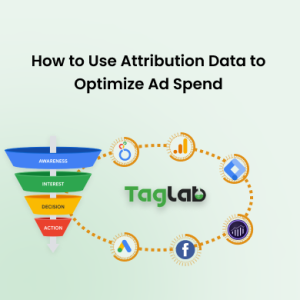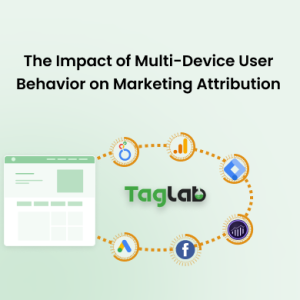Your cart is currently empty!
Marketing Attribution Revenue Metric Definition
Posted by:
|
On:
|
Marketing Attribution Revenue measures the total revenue generated from marketing efforts, attributing value to each touchpoint in the customer journey. This metric helps businesses evaluate how effectively different channels and campaigns contribute to sales and helps optimize marketing spend for higher revenue impact.
Detailed Explanation
What is Marketing Attribution Revenue?
Marketing Attribution Revenue represents the total revenue attributed to marketing campaigns, taking into account the value of each interaction that a customer has with the brand before making a purchase. Attribution models—such as first-touch, last-touch, or multi-touch—help assign value to each marketing activity, allowing businesses to understand which channels, touchpoints, and campaigns are most effective in generating revenue.
How it Works?
Marketing Attribution Revenue is calculated by assigning revenue from conversions to different touchpoints along the customer journey using an attribution model. Depending on the model used, each marketing touchpoint receives a portion of the credit for generating the revenue:
Attributed Revenue = Total Revenue x Attribution Model Credit for Each Touchpoint
By assigning revenue to specific marketing activities, businesses can evaluate the effectiveness of each channel and campaign, identify key revenue drivers, and optimize marketing strategies accordingly.
Types of Marketing Attribution Models for Revenue
- First-Touch Attribution: Assigns all revenue to the initial interaction that introduces the customer to the brand, highlighting the effectiveness of brand awareness campaigns.
- Last-Touch Attribution: Attributes all revenue to the last touchpoint before conversion, showing which interactions most directly drive sales.
- Multi-Touch Attribution: Distributes revenue credit across all touchpoints, providing a comprehensive view of how different marketing efforts work together to generate revenue.
- Time Decay Attribution: Assigns more revenue credit to touchpoints closer to the conversion, emphasizing the importance of recent interactions in driving purchase decisions.
- Position-Based Attribution: Distributes credit unevenly, giving more value to the first and last touchpoints, showing the impact of both initial engagement and final conversion activities.
Illustrative Scenarios
Examples
- An online retailer runs a combination of email marketing, social media ads, and paid search campaigns. Using a multi-touch attribution model, they determine that these efforts collectively generated $200,000 in revenue, with each channel contributing differently based on customer interactions throughout the journey.
- A B2B software company uses first-touch attribution to evaluate a brand awareness campaign. The campaign is attributed $150,000 in revenue because it served as the initial touchpoint for many new customers.
Segmentation
Marketing Attribution Revenue can be segmented by channel, campaign type, or customer segment. For example, segmenting revenue by channel can reveal which channels are contributing the most to overall revenue, helping businesses allocate budget more effectively to high-performing channels.
Factors Influencing Marketing Attribution Revenue
- Attribution Model Selection: The choice of attribution model significantly impacts how revenue is distributed among touchpoints, affecting insights into channel and campaign performance.
- Customer Journey Complexity: Complex customer journeys with multiple touchpoints can influence the accuracy of revenue attribution, as all interactions may not be equally impactful.
- Channel Effectiveness: The performance of individual channels (e.g., social media, paid ads, email) affects how much revenue is attributed to each channel, with more effective channels driving more revenue.
- Data Quality: High-quality data on customer interactions is essential for accurately attributing revenue. Incomplete or inaccurate data can lead to incorrect insights and misallocation of budget.
- Campaign Integration: The ability to effectively integrate marketing campaigns across multiple channels can improve the overall impact and attributed revenue by providing a seamless customer experience.
Strategies to Improve Marketing Attribution Revenue
- Select the Right Attribution Model: Choose an attribution model that aligns with your business goals and customer journey to accurately assign revenue and understand the value of each touchpoint.
- Enhance Data Quality: Ensure that all customer interactions across channels are accurately tracked using tools like Google Analytics, CRM systems, and marketing automation platforms.
- Focus on High-Performing Channels: Use attribution data to identify which channels drive the most revenue, and allocate more budget to these channels to maximize revenue generation.
- Integrate Marketing Efforts: Coordinate campaigns across multiple channels to provide a seamless customer experience, increasing the likelihood of conversion and boosting attributed revenue.
- Continuously Test and Optimize Campaigns: Regularly test different marketing strategies, channels, and attribution models to refine your approach and improve overall revenue attribution.
Benchmark Indicators
Understanding Marketing Attribution Revenue benchmarks by industry helps evaluate the revenue contribution of marketing campaigns and channels:
- Technology Industry: Revenue contribution from marketing campaigns typically ranges from 30% to 50%, as brand awareness and lead nurturing campaigns play a significant role in customer acquisition.
- Healthcare Industry: Attributed revenue often ranges from 20% to 40%, driven by highly targeted campaigns aimed at educating and building trust with potential patients.
- Financial Services: Revenue attribution generally falls between 25% and 45%, as financial institutions use targeted campaigns to build long-term customer relationships.
- E-commerce: Attributed revenue ranges from 40% to 60%, depending on the effectiveness of multi-channel campaigns, including personalized recommendations and retargeting efforts.
- Education Sector: Revenue contribution from marketing campaigns can vary from 15% to 35%, influenced by campaign relevance and lead nurturing throughout the enrollment cycle.
- Real Estate: Attributed revenue often ranges between 25% and 45%, as successful campaigns depend on personalized communication, follow-ups, and multi-channel engagement.
Tools for Measuring Marketing Attribution Revenue
- Attribution Platforms: Tools like Google Analytics, HubSpot, and Adobe Analytics provide insights into the revenue impact of different marketing channels and campaigns using various attribution models.
- CRM Systems: Integrating CRM systems like Salesforce with attribution tools helps track customer interactions and attribute revenue to specific marketing activities.
- Data Visualization Tools: Platforms like Tableau and Looker Studio help visualize revenue attribution data, making it easier to identify high-performing channels and optimize campaigns.
Common Pitfalls and Mistakes
- Using an Inappropriate Attribution Model: Choosing an attribution model that does not accurately reflect the customer journey can lead to incorrect revenue insights and misinformed budget allocation.
- Ignoring Multi-Touch Attribution: Focusing solely on first-touch or last-touch attribution may overlook the contributions of other important touchpoints. Multi-touch attribution provides a more complete understanding of revenue generation.
- Inaccurate Data Collection: Poor data quality or incomplete tracking of customer interactions can lead to inaccurate revenue attribution, reducing the effectiveness of marketing optimization efforts.
- Not Optimizing Based on Insights: Failing to use attribution insights to adjust and optimize campaigns can result in missed opportunities to increase revenue. Regular analysis and action are key to maximizing attributed revenue.
- Overlooking Offline Touchpoints: Not considering offline interactions—such as in-store visits or phone calls—in attribution models can lead to incomplete revenue analysis. Including all customer touchpoints helps provide a comprehensive revenue picture.
Frequently Asked Questions
What is Marketing Attribution Revenue?
Marketing Attribution Revenue measures the total revenue generated from marketing efforts by assigning value to each touchpoint in the customer journey.
Why is Marketing Attribution Revenue important?
Marketing Attribution Revenue is important because it helps businesses understand which channels and campaigns are contributing to revenue, allowing for more informed budget allocation and campaign optimization.
How can I improve Marketing Attribution Revenue?
To improve attributed revenue, choose the right attribution model, enhance data quality, focus on high-performing channels, integrate marketing efforts, and continuously test and optimize campaigns.
What factors influence Marketing Attribution Revenue?
Factors influencing attributed revenue include attribution model selection, customer journey complexity, channel effectiveness, data quality, and campaign integration.
What are good benchmarks for Marketing Attribution Revenue?
Good benchmarks for Marketing Attribution Revenue vary by industry, with contributions above 45% considered excellent, while contributions below 20% indicate a need for improvement.



